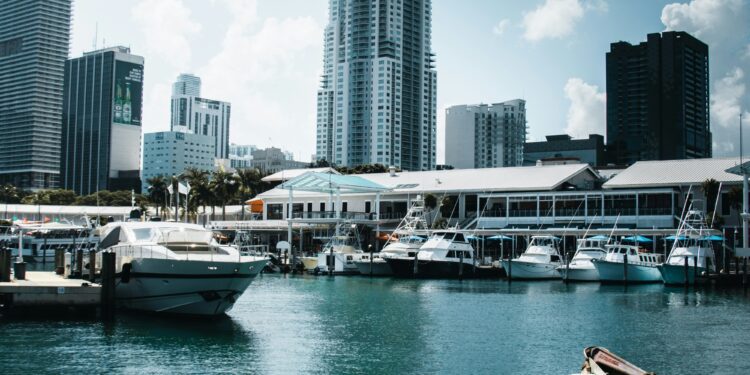A single mosquito bite can alter the landscape of a city’s public health. On July 2, the Florida Department of Health in Miami-Dade County informed residents that two dengue fever infections were acquired locally this season.
Locally transmitted dengue is rare in continental United States, yet Miami-Dade now joins a growing list of Florida counties confronting the Aedes aegypti mosquito. Public-health authorities and the county mosquito-control district have launched a coordinated campaign of enhanced surveillance, barrier treatments, and community education to stem further spread.
Rising Incidence and Regional Context
Dengue is a flavivirus carried primarily by Aedes aegypti and secondarily by Aedes albopictus. Symptoms typically include high fever, severe muscle and joint pain, headache, and sometimes rash. Although respiratory symptoms seldom occur, dengue can progress to hemorrhagic manifestations in a minority of cases.
Last year more than 3,700 dengue infections were reported nationwide, of which approximately 105 were acquired domestically in Florida, Texas, or California. The Centers for Disease Control and Prevention issued a health advisory in March to alert clinicians to heightened risk during peak mosquito season.
In 2024 Miami-Dade reported 91 locally acquired cases. That figure accounted for nearly half of Florida’s 191 local transmissions last year. Although the majority of dengue infections in the United States remain travel-related, local cycles have become increasingly persistent in South Florida.
Public-Health Response and Mosquito-Control Strategies
The twin confirmations on July 2 triggered a rapid escalation of vector-control measures. Teams from the county mosquito-control district have deployed targeted barrier treatments in neighborhoods nearest to each patient’s residence. According to the DOH-Miami-Dade press release, operations include door-to-door inspections, larvicide applications in standing water, and adulticide spraying at dusk—when Aedes aegypti adults are most active.
Simultaneously, the department has intensified entomological surveillance, setting additional ovitraps and BG-Sentinel traps to monitor mosquito density and infection rates. Laboratory testing of trapped specimens aims to detect dengue-positive pools, providing early warning of viral circulation.
Community Engagement and Personal Protection
Public-health officials emphasize that community action is indispensable. Residents are urged to eliminate all standing water sources, including plant saucers, gutters, and discarded tires. The department recommends the regular use of Environmental Protection Agency–registered repellents containing DEET or picaridin, along with wearing long sleeves and trousers during dawn and dusk hours.
DOH-Miami-Dade has distributed multilingual educational materials and launched a hotline at 305-324-2400 for symptom reporting and mosquito-control inquiries. The county also partners with faith-based and neighborhood associations to conduct informational sessions, reinforcing preventive practices and clarifying that dengue is not directly contagious from person to person.
Climate Change and Dengue’s Geographic Expansion
Climate factors have contributed to Aedes aegypti’s spread beyond its historical ranges. Warming temperatures and increased rainfall patterns create favorable breeding conditions. A KFF Health News analysis notes that federal research cutbacks have hindered vaccine development and vector ecology studies, raising concerns that dengue may become endemic to wider areas of the continental United States.
South Florida’s subtropical climate effectively mimics regions of Latin America where dengue is hyperendemic. As such, public-health teams here serve as an early-warning system for other jurisdictions. The sustained local transmission in Miami-Dade underscores the urgency of reinforcing both environmental and infrastructural resilience against vector-borne threats.
Surveillance Data and Early-Warning Indicators
The CDC’s provisional 2025 dengue data indicate underreporting is likely, given asymptomatic cases and variable healthcare-seeking behavior. Nevertheless, early-season indicators align with patterns from recent years, portending a potentially high incidence period through October.
Health departments rely on timely laboratory confirmation and epidemiological interviews. Confirmation of indigenous cases typically involves reverse transcription polymerase chain reaction testing to detect dengue viral RNA, followed by serotyping to distinguish among the four DENV serotypes. This season, DOH-Miami-Dade has reported DENV-3 and DENV-4 in separate locally acquired cases, suggesting multiple viral introductions or co-circulation.
Health-System Preparedness and Clinical Considerations
Local hospitals and urgent-care clinics have been apprised of the alert and advised to maintain high suspicion for dengue in patients presenting with compatible syndromes. Clinical management emphasizes supportive care—hydration and analgesia—while avoiding nonsteroidal anti-inflammatory drugs that can exacerbate hemorrhagic risks.
Laboratories have been urged to expedite dengue testing and report positive results within 24 hours to the department. That rapid reporting facilitates contact tracing and targeted insecticide application, crucial for interrupting transmission chains.
Legal and Policy Dimensions
Municipal authorities possess statutory powers to enforce property inspections and remove mosquito-breeding habitats on private land. In extreme circumstances, health officers may seek court orders to access noncompliant properties. Such measures, while uncommon, reflect the gravity of vector-borne outbreaks and the public-health imperative to safeguard communities.
Policy debates have emerged regarding sustained funding for mosquito control. The county commission is considering an increase in the annual millage dedicated to vector services, a proposal that would expand staffing and equipment capabilities. Advocates argue that upfront investment in prevention averts far greater costs from hospitalizations and lost productivity.
Regional Collaboration and Information Sharing
Miami-Dade’s response dovetails with statewide efforts. The Florida Department of Health’s weekly Arbovirus Surveillance Report aggregates data on dengue, West Nile virus, chikungunya, and other mosquito-borne illnesses. Sharing of surveillance metrics across county lines enables adaptive strategies, such as reallocating mobile spraying units to emerging hotspots.
Interagency coordination extends to the National Weather Service, which provides forecasts of precipitation and temperature anomalies. These meteorological insights guide predictive models of mosquito abundance, enabling preemptive larviciding ahead of anticipated rainfall events.
Public Perception and Media Dynamics
News coverage has prompted both vigilance and concern among residents. Social media discussions frequently surface anecdotal reports of mosquito infestations and personal protective experiences. While heightened awareness can spur constructive action, public-health communicators caution against unverified claims that may erode confidence. Accurate messaging remains pivotal: acknowledging risk without inducing undue alarm.
Local outlets, including the Miami Herald, have highlighted the rarity of severe dengue complications while emphasizing the collective role in prevention. Opinion columns have urged unity in confronting vector challenges, noting that dengue control transcends political or socioeconomic divides.
Lessons for the Future
Miami-Dade’s experience this July may presage similar scenarios elsewhere in the United States. As Aedes aegypti habitats expand, the line between travel-associated and local transmission blurs. Public-health infrastructure must adapt to a paradigm where vector-borne diseases no longer respect historical boundaries.
Key lessons include the indispensability of community engagement, the value of robust surveillance systems, and the necessity of sustained funding for vector control. Collaborations among health departments, mosquito-control districts, academic researchers, and media outlets form the backbone of an effective response.
Conclusion
The confirmation of two locally acquired dengue cases in Miami-Dade County marks a pivotal moment for South Florida’s public-health authorities. Intensified mosquito-control operations, enhanced surveillance, and community education aim to contain transmission before it escalates. Yet the broader narrative underscores the interplay of climate change, resource allocation, and policy choices in shaping the trajectory of dengue in the United States. As summer advances, vigilance and collective action will determine whether this alert remains a brief chapter or the beginning of a more entrenched public-health challenge.















